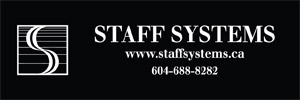Recruiting Future Leaders Today
By Neil McEachern, CHRP Candidate
The shift from the industrial era to the intellectual era has put a new emphasis on HR’s ability to attract and retain leaders of today and tomorrow. How do we identify and hire these leaders?
For HR professionals to be able to first attract and then retain leaders of the intellectual era, we must be able to identify the attributes of a leader. One may think that the attributes that define leadership have remained the same over time. However, this is far from the truth; while some ideals of yesteryear still exist in modern leaders, the fact is leadership has evolved and adapted to the modern era. After discovering how leaders have changed and what defines a modern leader, we will be able to delve into how to hire and attract these individuals.
X vs. Y
Leaders have always played a crucial role in workforce motivation and perhaps the best way to describe the change in leadership between the industrial era and the intellectual era can be explained by the theory of X and Y, which was developed by Douglas McGregor during his time at MIT. One can posit that theory X (where leaders assumed that workers were naturally lazy and required some form of external motivation such as raises or benefits), thus making control systems in the workplace: think clocking-in/clocking-out and progressive discipline/fear to motivate workers into accomplishing company goals.
On the other hand, theory Y (where leaders take an optimistic approach to human nature and believe that workers will be self motivated to complete the goals assigned to them, quite possibly through the use of intrinsic rewards) feels more like what currently happens in most organizations, where we see things such as employee empowerment and flex time.
One could attribute theory X to corporations that are hierarchical in nature, while theory Y would then apply to those of a flat structure.
Leadership Through Empowerment
Another model to examine is that of the managerial grid that was developed by Robert Blake and Jane Mouton, which initially described five different styles of leadership1. The team style of leadership is based on theory Y and is where the highest concern is paid towards not only production but also people; leaders using this style of leadership openly empower their followers, acknowledging each individual action as playing a crucial part in accomplishing their overall goals. The produce-or-perish style of leadership is not surprisingly based heavily on theory X, where there is little concern for people and a need for constant results.
Now that we are aware of what modern leaders can be, we have to determine how to identify what type of leadership style they use and if they would fit into our organization, and then determine what it would take to hire these individuals. We must note that in the modern era leaders may not necessarily be in management positions and thus must ensure that we search far and wide for the best candidates.
Attracting Leadership That Fits
One of the most evident ways of identifying said leaders would be to conduct references of an individual’s colleagues, as this would perhaps give the best indication of what style of leadership that the individual uses and a sense of what attributes are felt to be crucial. One could state that theory Y, along with a team style of leadership, is becoming more apparent in the modern workplace and thus we must be able to attract a leader of this caliber, likely with intrinsic rewards and not external ones, such as keys to the executive washrooms (do these even exist in Vancouver)?
Therefore, we must be intimately aware of the culture that our organization fosters prior to recruiting an external leader, or we could end up wasting time pursuing an individual who sees no opportunities in our organization. As previously mentioned, external awards such as monetary compensation, while important, should not be the ultimate factor in whether an individual would consider a change, and indeed one should take caution if they came across a supposed leader who would jump solely for a pay raise.
Therefore, we must also be able to clearly define what possible intrinsic rewards exist within the role and how to make sure that these rewards come across to the individual as being available within our organization. As in all forms of recruitment, we must be able to sell the role to modern leaders and convince them as to why their playing a part in our organizations would be beneficial to them on an level greater than monetary gain.
We have explored what leadership is and the role it plays in the workplace. We have also determined how one can identify leaders and looked at what it takes to hire them. While the process of identifying and hiring these modern leaders may seem like a complex one, we must realize that today’s corporate leaders are already implementing these ideas and we need to educate ourselves on how this process could benefit our own companies and organizations.
(PeopleTalk: Winter 2010)








